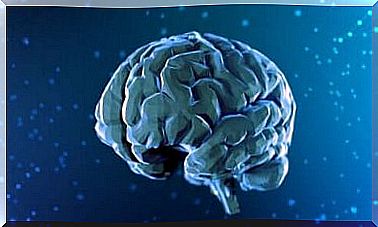Does Your Brain Have A “happiness Zone”?

A recent study provided new insights into the human brain. Researchers seem to have found a “happiness zone” in the brain that responds to electrical stimulation. This discovery opens up more treatment options for a variety of pathologies.
The study started as a brain mapping project using electrical stimulation in patients with epilepsy. The researchers realized that stimulation of the cingulum always produced laughter or smiles in the subjects. It seemed to trigger feelings of well-being, joy and peace.
Researchers already knew that stimulation of certain parts of the brain can trigger the uncontrollable urge to laugh. However, this is the first time they have been able to identify one of them. They also discovered that stimulation of this area of the brain can significantly reduce anxiety.
The research that led to the discovery of a happiness zone
The team of neurologists at Emory University School of Medicine in Atlanta, Georgia studied patients with epilepsy using small electrodes to stimulate certain parts of their brain electrically. Their goal was to find information about the source of the patients’ seizures.
They were completely taken to bed when they stimulated the cingulum bundle (a channel of white matter that connects different brain groups with each other) in the brain of one of the subjects and saw that they began to laugh uncontrollably. Some time later, the subject stated that they felt relaxed and calm.

Then they decided to show the subject a series of facial expressions. They found that when the cingulum bundle was stimulated, the patient rated the facial expressions higher on the happiness scale. It is an indicator that the patient was in a better mood.
They also measured the patient’s cognition level while stimulating the cingulum bundle. In this connection, the subject completed memory, attention and language tests. Researchers saw no measurable difference in cognition during the electrical stimulation, which means that it does not appear to interfere with cognition at all.
The researchers also tested the rest of the subjects, who had the same responses to the electrical stimulation. They all reported a sense of calm and laughter uncontrollably.
Why does this area of the brain affect mood?
The cingulum bundle is located under the cerebral cortex and curved around the midbrain. The upper front area is where our happiness zone is located. This is a part of the brain where many different brain regions associated with complex emotions are connected to each other.
The white matter that crosses the cingulum bundle connects different brain surfaces. When you stimulate the cingulum bundle, other networks that extend to different parts of the brain can also be affected. In other words, it appears to be an intermediary to other areas of the brain.
Jon T. Willie, one of the researchers on the team, compares it to a highway with many on- and off-ramp ramps. The team believes that they may have found an access point to different networks that regulate mood, social interaction and emotions.

What does this mean for the future?
One of the most exciting possibilities is that electrical stimulation of this bundle of cingulum can be used to treat anxiety, depression or even chronic pain.
Another possibility is that this technique can be used to give patients a more comfortable experience during neurosurgery that requires them to stay awake.
The general public has to wait because this treatment currently requires extensive, invasive surgery. The electrodes must be placed directly on the brain, which means that you must undergo risky invasive surgery.
Nevertheless, this is a very important discovery that brings us one step closer to understanding the human brain. Hopefully, researchers can use this new information to improve or replace mood-related interventions in the future.









